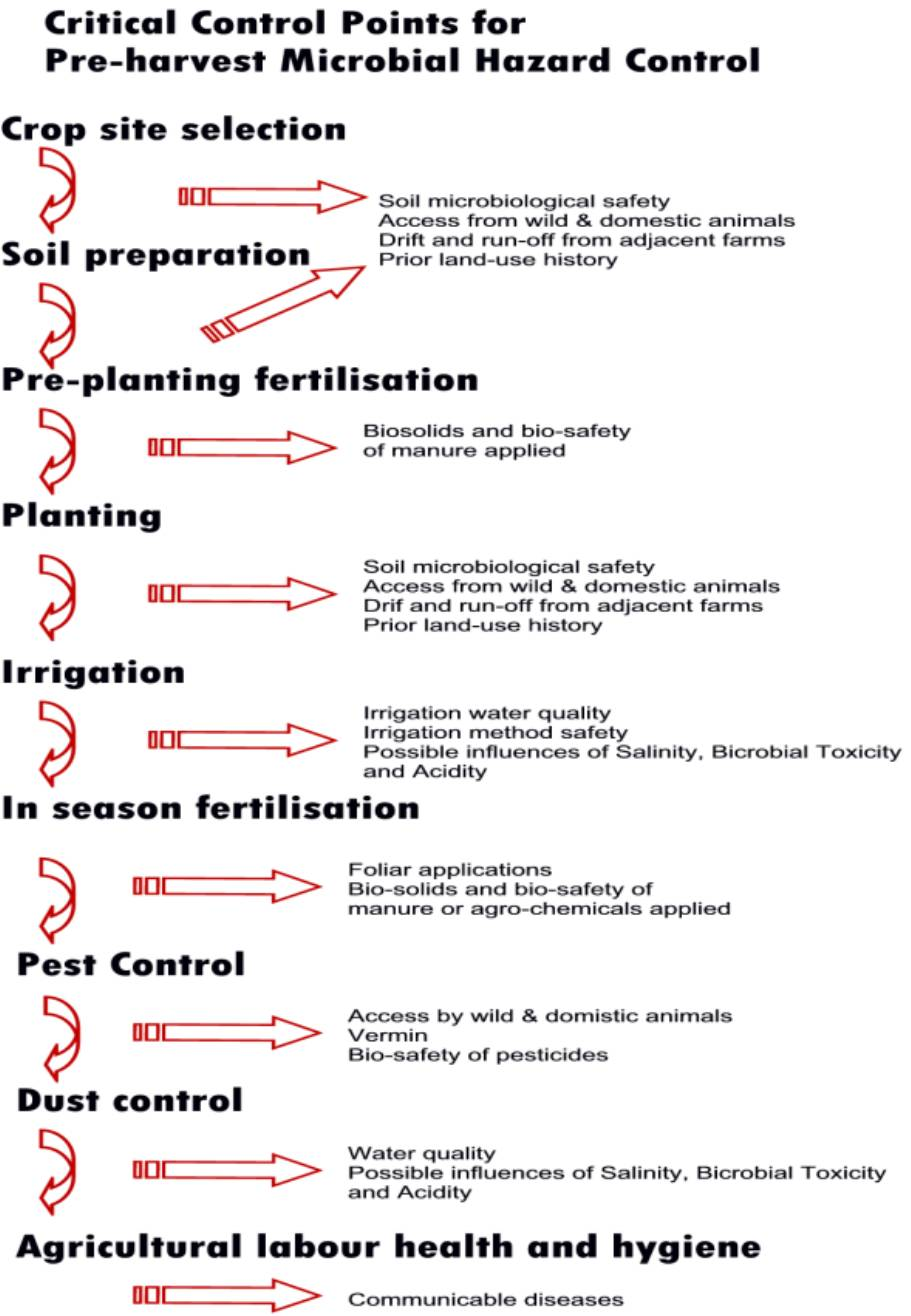Defining The Concepts
Deviations: Describe the difference between an observed value and the expected value.
Non-conformance: Include failures, deficiencies, defects and malfunctions in a product or behaviour that causes the deviation.
The grower, packer, shipper, and handler of fresh consumed horticultural products are often faced with a hundred different decisions and responses to weather, pests, market value and trends, labour, and customer requests. Each decision may alter microbial food safety risks. The potential risk may be reduced or increased by seemingly minor deviations in timing, source of production input, degree of handling, method of cooling, or any dozens of different interacting factors.

The Types Of Problems The Enterprise Can Have If Plans To Deal With Deviations Are Not In Place
Animal manure is often contaminated with human pathogens. This waste management issue is believed to be a key contributor to an intimately related potential source of produce contamination, water. It has long been known that the improper use of manure can transfer pathogens onto crops, resulting in human disease. Raw manure should not be applied to crops. In addition to the hazard of pathogen transmission, it is well recognized that salt injury to sensitive vegetable crops and transfer of viable weed seed may result unless the manure is subjected, at least, to a period of unmanaged (no thorough mixing or pile inversion) composting.
The following inputs to the enterprise will become contaminated:
Water – quality might become poor, with high salinity or toxicity for the crop produced, causing the crop to fail or become unsafe for human consumption.
Soil – soil might become ineffective, with unbalanced nutrient profiles, causing the crop to fail or the crop to become unsafe for human consumption
The actual crop prior to harvesting – the crop might become poisoned or toxic or generally unsafe for human consumption, due to exposure from microbial, physical, chemical, viral hazards.
Why It Is Necessary For Workers To Be Trained With Regards To Detecting Problems In The System And Being Able To Trace It To The Source
If the workers are trained in, and really understand the principles of food safety, then they will:
- Contribute to the supply of a healthy and safe crop.
- Automatically report any deviances and problems that might lead to compromised food safety.
- Become the custodians of a Good Agricultural Food Safety Monitoring system such as HACCP.
Here is a visual representation of:
- Examples of deviations from pre-harvest norms and Critical control points for monitoring and detection.
- The way non-conformances and deviations in food safety and quality will be detected.
- The way this problem will be traced to a pre-harvest environment.
